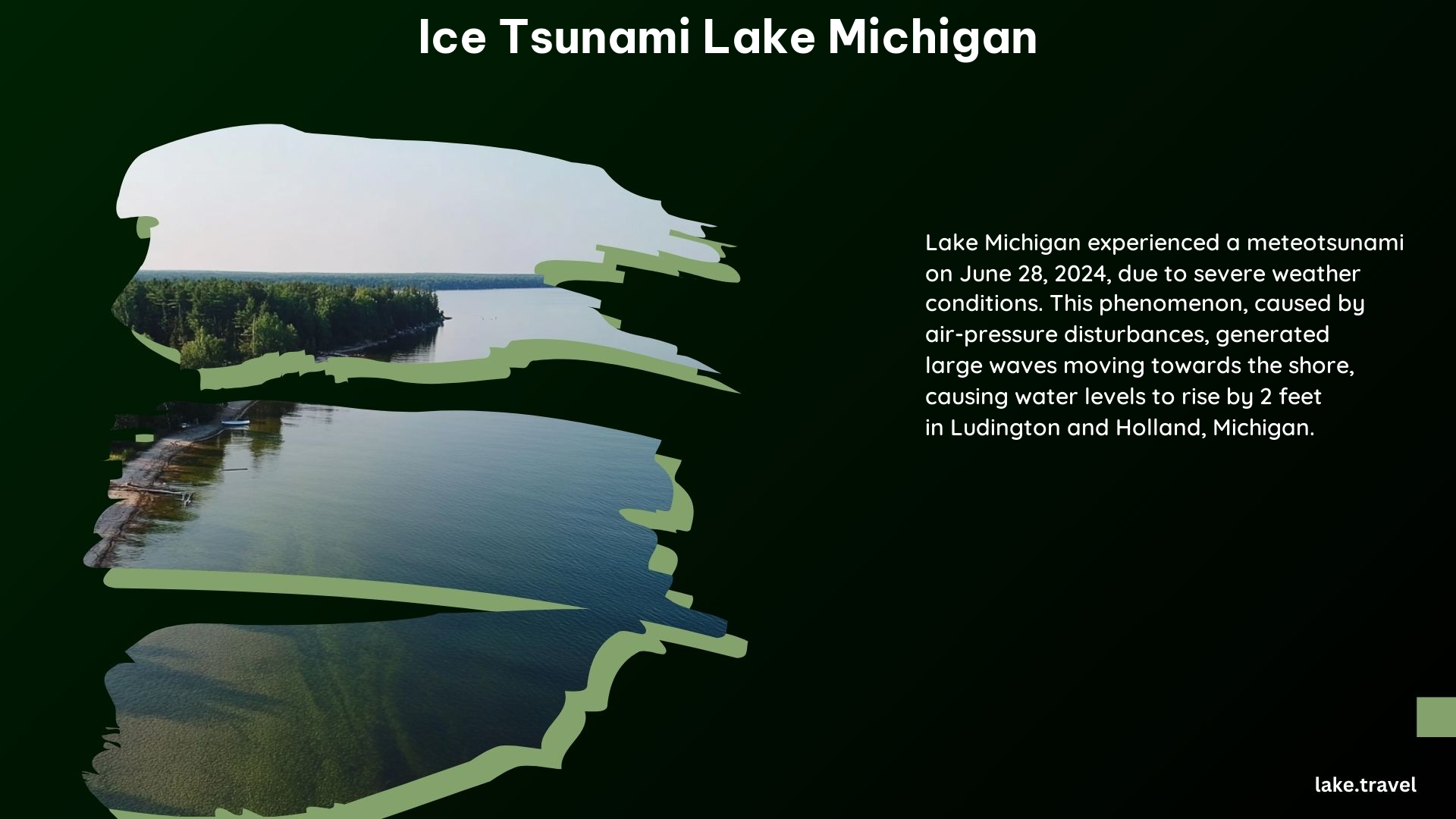Ice Tsunami Lake Michigan is a rare and destructive event that occurs when strong winds drive large masses of ice from the lake onto the shore, causing significant damage to homes and structures. This phenomenon is a type of meteotsunami, a tsunami-like event caused by severe weather conditions, and is a common occurrence on the Great Lakes, including Lake Michigan.
What is an Ice Tsunami?

An ice tsunami, also known as an ice heave, is a unique weather event that occurs when strong winds push large sheets of ice from the lake onto the shore. This can happen on the Great Lakes, including Lake Michigan, where the combination of cold temperatures, strong winds, and large bodies of water can create the perfect conditions for an ice tsunami.
Frequency of Ice Tsunamis on Lake Michigan

Lake Michigan experiences around 100 meteotsunamis annually, making them a relatively common occurrence in the region. However, ice tsunamis are a more rare and extreme form of these events, occurring less frequently but with potentially devastating consequences.
Typical Wave Heights and Impacts
Meteotsunamis on Lake Michigan can cause significant damage, with wave heights reaching up to 6 feet. These events can lead to flooding, with water levels rising by as much as 2 feet, as seen in recent incidents in Ludington and Holland, Michigan. The impacts of ice tsunamis can be even more severe, as the large sheets of ice can rise out of the lake and move onto the shore, causing extensive damage to homes and structures.
Real-Life Incidents of Ice Tsunamis on the Great Lakes
There have been several documented cases of ice tsunamis on the Great Lakes, including incidents in Minnesota and Canada. In one instance, 55-mile-per-hour winds drove masses of ice from Lake Mille Lacs in Minnesota, destroying homes and damaging others. Similarly, ice tsunamis have been observed on Lake Erie and other Great Lakes, with the destructive power of the ice shards and large sheets of ice moving onto the shore causing significant damage.
Predicting and Warning for Ice Tsunamis
Predicting and warning the public about ice tsunamis can be complex due to their similarity to wind-driven storm surges or seiches. The National Weather Service plays a crucial role in monitoring weather conditions and issuing warnings to the public when severe weather events are expected. However, the unpredictable nature of these events can make it challenging to provide accurate and timely warnings.
Video Footage of Ice Tsunamis
There are several videos documenting ice tsunamis on the Great Lakes, including footage from Lake Erie and Lake Mille Lacs. These videos provide a vivid illustration of the destructive power of these events, with ice shards and large sheets of ice moving onto the shore and causing damage to homes and structures.
Conclusion
Ice Tsunami Lake Michigan is a rare and destructive phenomenon that can have devastating consequences for coastal communities. While these events are relatively uncommon, they serve as a reminder of the power of nature and the importance of being prepared for severe weather events. By understanding the causes, impacts, and warning systems for ice tsunamis, residents and visitors to the Great Lakes region can be better equipped to respond to these unique and challenging weather events.
References:
- https://www.cbsnews.com/news/meteotsunami-slammed-lake-michigan-severe-weather-what-to-know/
- https://www.youtube.com/watch?v=sZ36EvYS9wQ
- https://www.snowaddiction.org/2013/12/Ice-tsunami-captured-camera-rising-lake-destroying-homes-residents-watch-helplessly-shore.html
